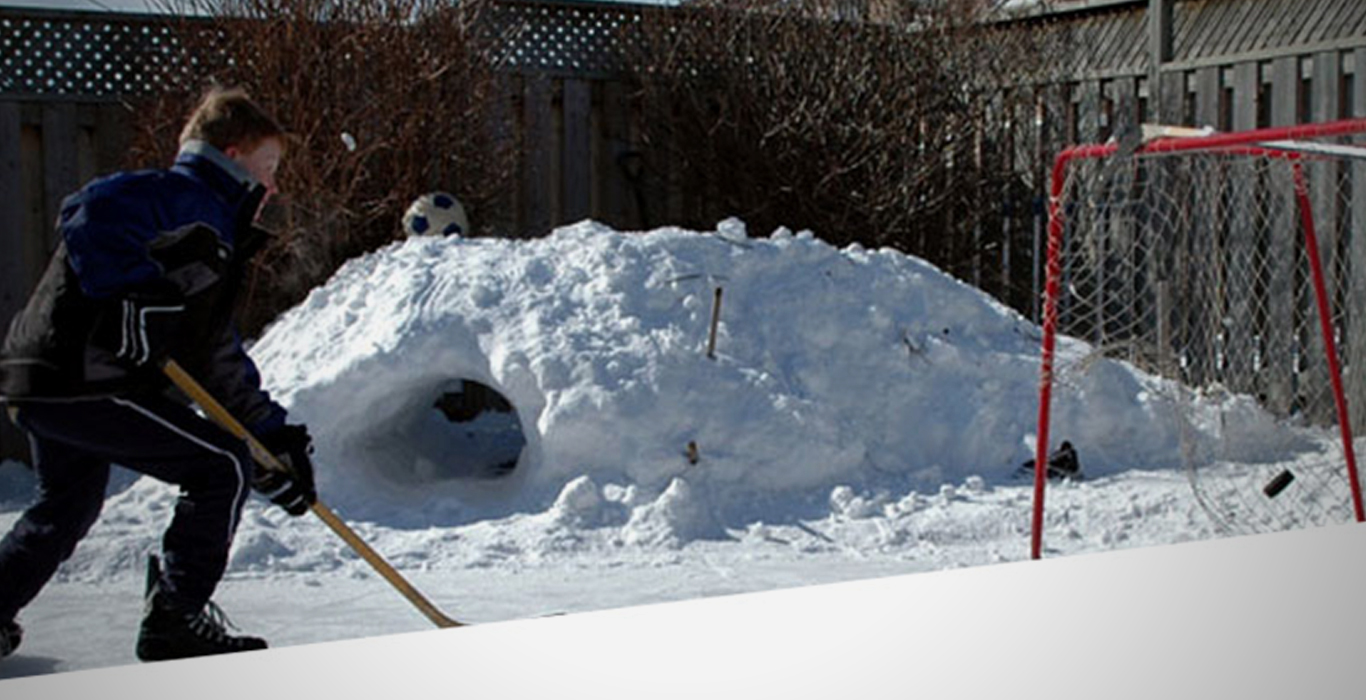Building a backyard rink this winter? 8 tips for outdoor skating fun and neighbourhood harmony

For many families, the arrival of winter means rosy-cheeked children will soon be lacing up ice skates for some fresh air, exercise and outdoor fun.
But as much as Canadians cherish the story of how hockey great Wayne Gretzky perfected his skills on a backyard rink, every year we hear cautionary tales of families who are upset by an order to remove their home ice rink, after umpteen hours of flooding and care.
Often the issues start when a neighbour complains about the noise of pucks being blasted around, lights that shine into their home, or they see the rink next door as an eyesore that affects their enjoyment of their property. Last year, for example, a family in Ajax, Ontario was ordered to remove a small rink in their front yard or face a hefty fine.
So, assuming that Mother Nature cooperates and sends steady cold temperatures our way this winter, here are 8 things to know for a fun-filled outdoor ice skating season:
1. Backyard rinks are generally allowed – for personal use only
Families have the right to play in their own yards. In the City of Toronto, for example, backyard rinks are permitted if they are for personal use only. The key words here are “for personal use”. So, keep your rink for the private use of your family and friends. If the activity level becomes excessive and starts to resemble a full-time community centre, it could be deemed “non-residential use” and the good times may be over.
2. Stay within your property boundaries
Make sure the rink is 100% located on your property and does not creep over the property line – even the most supportive neighbour will expect you to respect the boundary. You don’t need the kind of trouble that comes from crossing that line.
Also note that the backyard is usually the best place for a rink as your front property line may be a lot closer to the house than you think, and you can’t put your ice pad on public right-of-way.
If you ’re not sure where your property line is, now is the time to find out its exact location, either by consulting your land survey plan (you can find GTA survey plans here) or by arranging for a survey crew to stake out your property line. (You’ll also appreciate this information when it comes time for summer landscaping projects!)
3. Rink boards and bleachers
In the City of Toronto, ice rinks are not deemed to be “structures” and therefore no permit is required to flood a patch of ice for your kids on your own property (see point #2 above). Things get trickier when you plan to build boards or bleachers. Now you’re crossing a line to installing “ancillary” or “accessory” buildings or structures in the eyes of local bylaw officers. That brings local zoning bylaws and building codes into effect. Ancillary structures are typically not permitted in a front yard, and need to comply with zoning regulations governing maximum height of the structure and setbacks from the property line in the backyard.
4. Lighting & Noise
Excessive lighting could be considered a nuisance that unfairly affects your neighbours. The Town of Oakville, for example, has a nuisance bylaw (2007-143) that states: “No Owner or Occupant of a Property shall cause or permit light to be broadcast directly from that Property onto another Property”. Similarly, late-evening noise may contravene noise bylaws.
Stringing some Christmas lights around your back fence is a simple way to provide lighting and nice ambiance (no need to start erecting light standards or spotlights!) And plan to shut things down at a reasonable time in the evening.
5. Check zoning bylaws
Always be sure to review zoning bylaws before you get started. You ’ll need to know the zoning designation for your property, as well as the location of your property boundaries. Zoning information, including Toronto’s consolidated zoning bylaw (569-2013) and Mississauga Zoning Information, is usually posted online, and a conversation with staff at your local municipal office is always well worth your time to discuss the specifics of your project.
6. Other considerations
Be aware that installing an ice rink will have a significant impact on your water bills, and drainage can be an issue in the spring depending on where all that melted water flows. (You DO NOT want to flood your neighbour’s basement.)
7. Keep your neighbours in the loop
A friendly chat goes a long way to maintaining cordial relationships. Talk to your neighbours about your plans. Take note of any concerns and try to address them up front. Mention that you will have rules, like no skating after 9 p.m. and that you welcome their input if any issues arise during the skating season. You want to minimize any impact on your neighbours – lighting, noise, water drainage, etc. – for a positive neighbourhood experience for all.
8. Consider the alternatives
Instead of building your own rink, why not take advantage of the many artificial and natural outdoor rinks available to the public in the Greater Toronto Area? The City of Toronto has 50 outdoor rinks and had a record 46 natural ice rinks built by community volunteers last year. Here’s a list of outdoor skating options in Mississauga, Oakville, Burlington, Halton Hills, Brampton, Vaughan, Richmond Hill, Markham, Aurora, Newmarket, Pickering and Ajax.
Whether you decide to go it alone and build your own rink, join with your neighbours and create a natural ice rink at a local park, or take advantage of other outdoor (and indoor) skating facilities, here’s to making the most of a Canadian winter!












